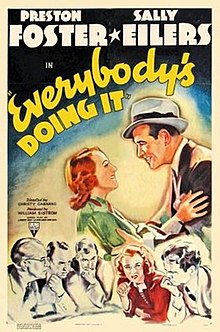
Norman Foster was an American film director, screenwriter and actor. He directed many Charlie Chan and Mr. Moto films as well as projects for Orson Welles and Walt Disney. As an actor he was a leading man in early talkies and also appeared in Welles' final film, The Other Side of the Wind.
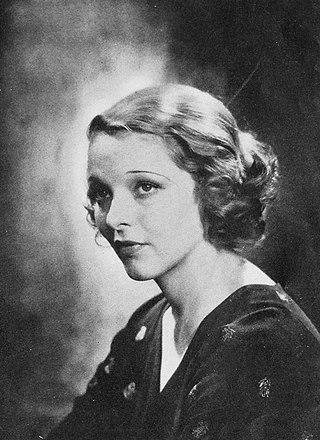
Sally Blane was an American actress who appeared in more than 100 movies.

Preston Stratton Foster, was an American actor of stage, film, radio, and television, whose career spanned nearly four decades. He also had a career as a vocalist.

The French Line is a 1953 American musical film starring Jane Russell made by RKO Radio Pictures, directed by Lloyd Bacon and produced by Edmund Grainger, with Howard Hughes as executive producer. The screenplay was by Mary Loos and Richard Sale, based on a story by Matty Kemp and Isabel Dawn. It was filmed in three strip technicolor and dual-strip polarized 3D during what many consider 3-D film's "golden era" of 1952–1954.

Dorothea Sally Eilers was an American actress.

William Christy Cabanne was an American film director, screenwriter, and silent film actor.

Sailor's Luck is a 1933 American pre-Code romantic comedy film directed by Raoul Walsh for Fox Film Corporation. It stars James Dunn, Sally Eilers, Victor Jory, and Frank Moran.

Living on Love is a 1937 American romantic comedy film released by RKO Radio Pictures. Directed by Lew Landers, it stars James Dunn, Whitney Bourne, and Joan Woodbury. The film is a remake of the RKO film Rafter Romance (1933). It is one of the "lost RKO films" owned by Merian C. Cooper and only re-released in April 2007 when Turner Classic Movies acquired the rights and aired all six films on its channel.

The Arizonian is a 1935 American Western film directed by Charles Vidor and starring Richard Dix, Margot Grahame, Preston Foster, and Louis Calhern. The screenplay was by Dudley Nichols. The film was released by RKO Radio Pictures on June 28, 1935.
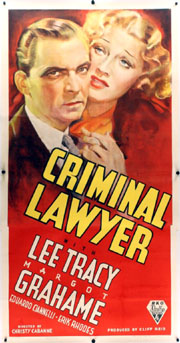
Criminal Lawyer is a 1937 American drama film directed by Christy Cabanne from a screenplay by G. V. Atwater and Thomas Lennon, based on a story by Louis Stevens. The film stars Lee Tracy, Margot Grahame and Eduardo Ciannelli. RKO produced the film and premiered it on January 26, 1937, in New York City, with a national release a few days later on January 29. It was the second time Stevens' story had been used for a film, the first being 1932's State's Attorney, starring John Barrymore and Helen Twelvetrees, directed by George Archainbaud, and also produced and released by RKO.

Don't Tell the Wife is a 1937 American comedy film directed by Christy Cabanne using a screenplay by Nat Perrin adapted from the play, Once Over Lightly, written by George Holland. The film stars Guy Kibbee, Una Merkel, and Lynne Overman, with Lucille Ball, William Demarest, and Academy Award winner Hattie McDaniel in supporting roles. Produced by RKO Radio Pictures, it premiered in New York City on February 18, 1937, and was released nationwide on March 5.
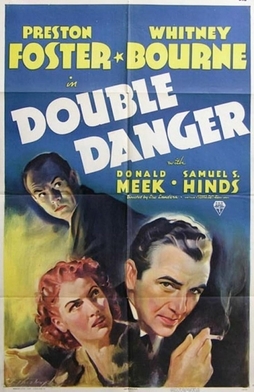
Double Danger is a 1938 American crime drama directed by Lew Landers, using a screenplay by Arthur T. Horman and J. Robert Bren based on Horman's story. The film stars Preston Foster and Whitney Bourne, with supporting roles by Donald Meek and Samuel S. Hinds. Produced by RKO Radio Pictures, it was released on January 28, 1938.

Danger Patrol is a 1937 American drama film directed by Lew Landers from a screenplay by Sy Bartlett based on a story by Helen Vreeland and Hilda Vincent. Produced and distributed by RKO Radio Pictures, it was released on December 3, 1937, and stars Sally Eilers, John Beal, and Harry Carey.

Crime Ring is a 1938 American crime drama film directed by Leslie Goodwins from a screenplay by J. Robert Bren and Gladys Atwater, based on a story by Reginald Taviner. The film stars Allan Lane and Frances Mercer, and was produced and distributed by RKO Radio Pictures, released on July 8, 1938.
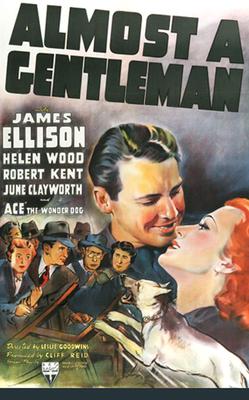
Almost a Gentleman is a 1939 American drama film directed by Leslie Goodwins from a screenplay by David Silverstein and Jo Pagano, based on the story by Harold Shumate. The film stars James Ellison, Helen Wood and Robert Kent. It was released by RKO Radio Pictures on March 31, 1939.
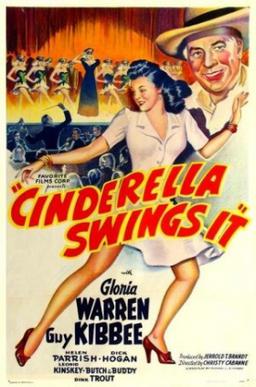
Cinderella Swings It is a 1943 American comedy-drama film directed by Christy Cabanne from a screenplay by Michael L. Simmons, based on short stories by Clarence Budington Kelland about small-town philanthropist Scattergood Baines. Produced and Distributed by RKO Radio Pictures, it was released on January 22, 1943, and stars Guy Kibbee and Gloria Warren. It was the last of the six films in the Scattergood Baines series and the only one without the word “Scattergood” in the title. Originally called Scattergood Swings It, the picture was renamed because the franchise was declining in popularity.
Charles R. Rogers, was an American film producer whose career spanned both the silent and sound film eras. Rogers began his career on the 1924 silent film, A Cafe in Cairo, produced by the short-lived Hunt Stromberg Productions. After Stromberg ceased productions in 1925, Rogers would found his own independent company, Charles R. Rogers Productions. He would also produce for major studios such as RKO Radio Pictures, Universal, and United Artists. The pinnacle of his career would be from 1936 to 1938 when he was chosen as the vice-president in charge of production for Universal Pictures. He died as the result of injuries sustained in a car accident in 1957.

Lee Marcus, also known as Lee S. Marcus, was an American film producer of the 1930s and 1940s. During his fifteen-year career he produced over 85 films, most of them between 1934 and 1941 while he was at RKO Studios. Prior to his production career, Marcus worked for FBO and then RKO as a sales executive, reaching the level of vice president in both organizations. At RKO, he was head of production of the studio's b-films during the late 1930s and the beginning of the 1940s. He was also responsible for producing what many consider to be the first film noir, 1940's Stranger on the Third Floor.
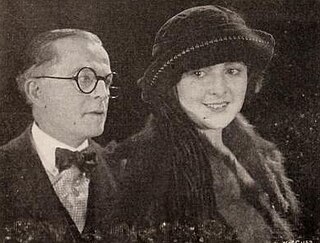
At the Stage Door, also known by its working title Women of Conquest, is a 1921 silent American romantic drama film directed by Christy Cabanne. It stars Billie Dove, Huntley Gordon, and Miriam Battista, and was released on December 11, 1921. The film gives a glimpse into the behind-the-scenes reality of life in the New York theater, as seen by a small town girl trying to make it in the big city. The picture received mixed reviews. This was Dove's first time on film, having moved over from the Ziegfeld Follies.

The Average Woman is a 1924 American silent melodrama film directed by Christy Cabanne and starring Pauline Garon, David Powell, and Harrison Ford. It was released on March 1, 1924.
